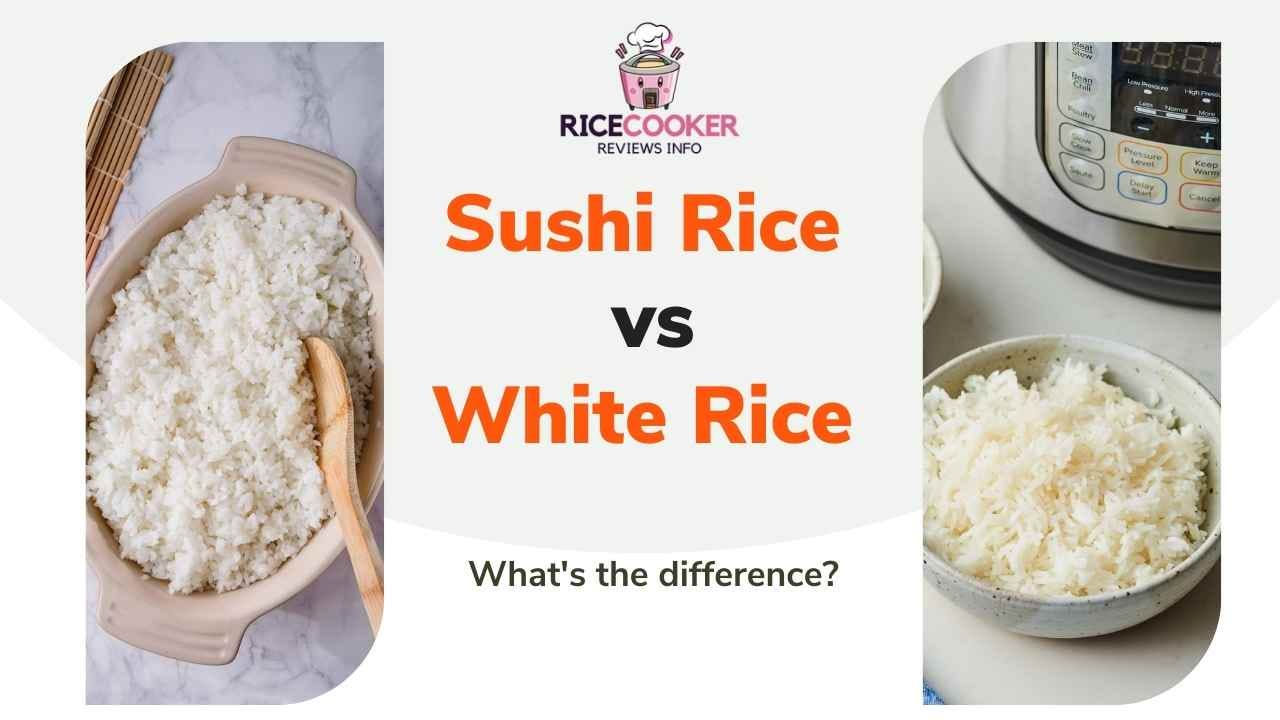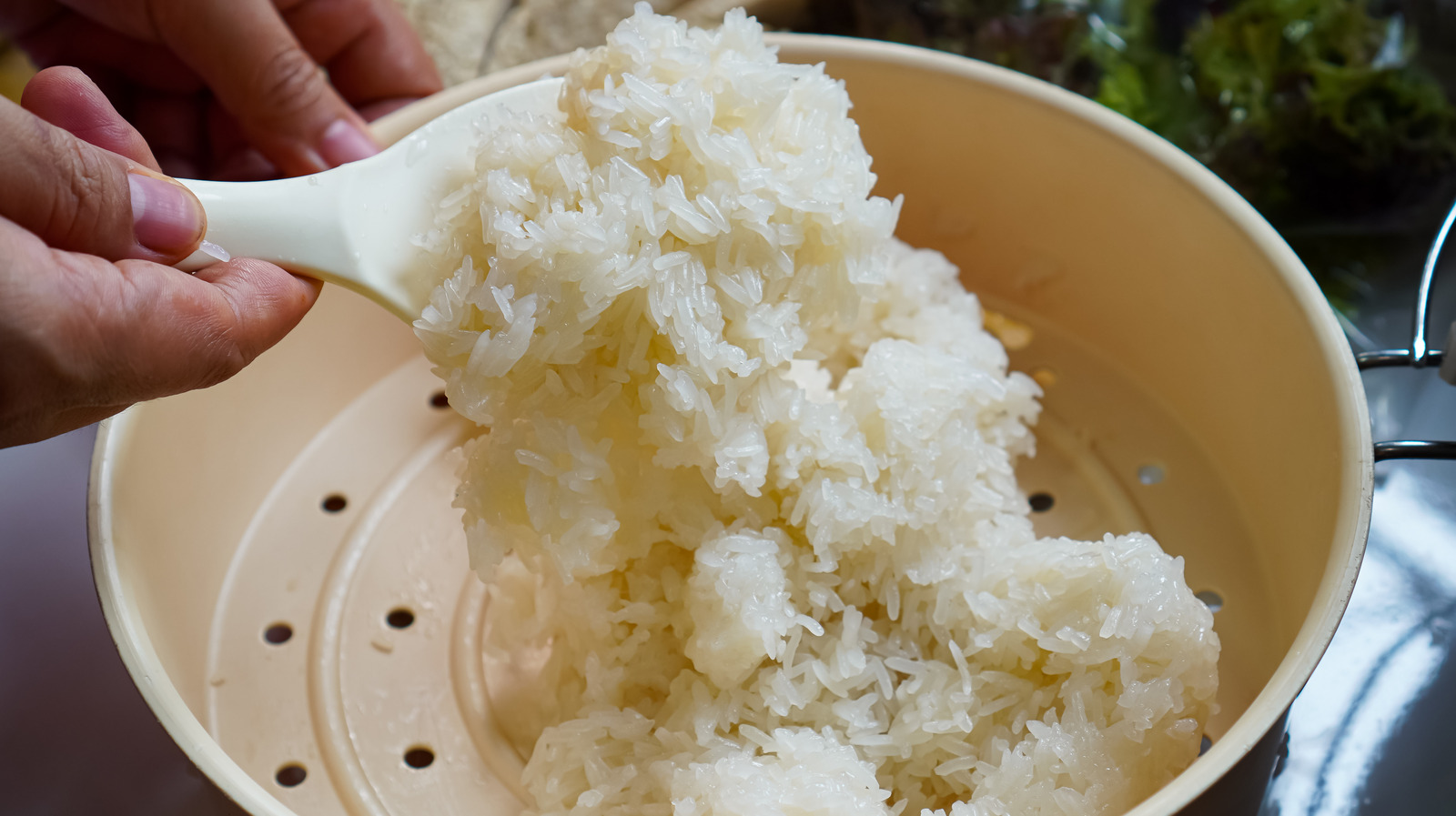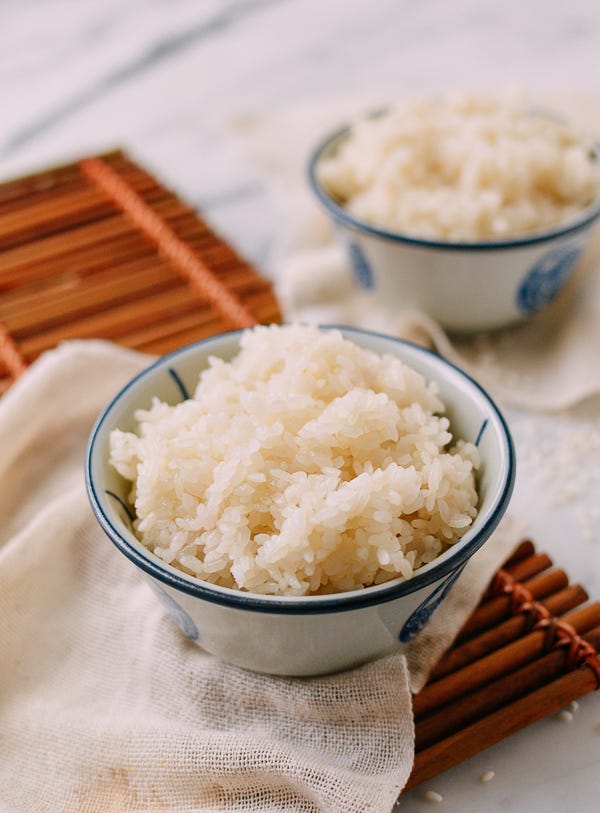What Is Glutinous Rice?

Glutinous rice, also known as sticky rice or sweet rice, is a type of rice that becomes sticky and chewy when cooked. Despite its name, glutinous rice does not contain gluten. It gets its sticky texture from a high starch content called amylopectin. Glutinous rice is commonly used in Asian cuisines, particularly in dishes such as rice cakes, dumplings, and sticky rice desserts. Its sticky nature makes it perfect for making sushi rolls and other dishes that require the rice to hold its shape. Glutinous rice also has a slightly sweet flavor that adds a unique taste to dishes.
What Is Glutinous Rice And Its Characteristics
Glutinous rice, also known as sticky rice or sweet rice, is a type of rice that has a unique set of characteristics. Despite its name, glutinous rice does not contain gluten. What sets it apart is its high starch content, particularly amylopectin, which gives it its sticky and chewy texture. When cooked, glutinous rice becomes soft, translucent, and sticky, making it perfect for various Asian dishes such as rice cakes, dumplings, and sticky rice desserts. Glutinous rice grains are typically large, opaque, and white in color. Its sticky nature and distinctive texture make it an essential ingredient in many traditional Asian cuisines.
Glutinous Rice Culinary Uses And Popular Dishes
Glutinous rice, with its sticky and chewy texture, is a versatile ingredient used in a variety of Asian dishes. It is commonly used to make traditional rice cakes, dumplings, and sticky rice desserts like mango sticky rice. In Southeast Asian cuisines, it is a staple in dishes such as Thai sticky rice and Indonesian ketan. Glutinous rice is also used to make sushi rolls, known as uramaki, in Japanese cuisine. Its unique texture and ability to hold together make it perfect for shaping and molding into various culinary creations.
What Is Sushi Rice?

Sushi rice, also known as “shari,” is a short-grain rice variety that is used in Japanese cuisine, particularly for making sushi. It is cooked and seasoned with a mixture of rice vinegar, sugar, and salt to give it a slightly sweet and tangy flavor. Sushi rice has a sticky texture, which allows it to hold its shape when rolled or shaped into sushi rolls or nigiri. Its ability to adhere to other ingredients is essential in creating the signature bite-sized pieces of sushi. Sushi rice is characterized by its slightly sticky and firm texture, making it perfect for creating well-formed sushi delicacies.
What Is Sushi Rice And Its Characteristics
Sushi rice, also known as “shari,” is a short-grain rice variety that is used in Japanese cuisine, particularly for making sushi. It is cooked and seasoned with a mixture of rice vinegar, sugar, and salt to give it a slightly sweet and tangy flavor. Sushi rice has a sticky texture, which allows it to hold its shape when rolled or shaped into sushi rolls or nigiri. Its ability to adhere to other ingredients is essential in creating the signature bite-sized pieces of sushi. Sushi rice is characterized by its slightly sticky and firm texture, making it perfect for creating well-formed sushi delicacies.
Sushi Rice Preparation And Significance In Japanese Cuisine
Sushi rice holds significant importance in Japanese cuisine due to its crucial role in creating traditional sushi dishes. The preparation process involves rinsing the rice to remove excess starch, then cooking it with the perfect water-to-rice ratio to achieve a sticky yet firm texture. After cooking, the rice is seasoned with a mixture of rice vinegar, sugar, and salt, which enhances its flavor and adds a tangy taste. The seasoned sushi rice forms the base for various sushi creations, such as nigiri, maki rolls, and hand rolls, allowing the flavors of the ingredients to harmonize and create a delightful sushi experience.
Glutinous Rice Vs Sushi Rice: Texture And Taste

When it comes to texture, glutinous rice and sushi rice have distinct differences. Glutinous rice, as the name suggests, is known for its sticky and chewy texture. Each grain sticks together, creating a cohesive and dense texture. On the other hand, sushi rice has a softer and less sticky texture compared to glutinous rice. It retains a slight firmness while still being tender.
In terms of taste, both glutinous rice and sushi rice have their unique flavors. Glutinous rice has a subtle sweet and nutty taste, which pairs well with savory dishes. Sushi rice, on the other hand, is seasoned with rice vinegar, sugar, and salt, which gives it a tangy and slightly sweet flavor. This seasoned taste enhances the overall flavor of sushi dishes, allowing the delicate flavors of the ingredients to shine through.
Comparison Of Glutinous Rice And Sushi Rice Texture
When it comes to texture, glutinous rice and sushi rice have distinct differences. Glutinous rice, as the name suggests, is known for its sticky and chewy texture. Each grain sticks together, creating a cohesive and dense texture. On the other hand, sushi rice has a softer and less sticky texture compared to glutinous rice. It retains a slight firmness while still being tender. These textural variations play a significant role in the culinary applications of each rice variety, allowing them to be used in a diverse range of dishes.
Comparison Of Glutinous Rice And Sushi Rice Taste Profiles
Glutinous rice and sushi rice have distinct taste profiles that complement the dishes they are used in. Glutinous rice has a subtle, sweet flavor that pairs well with savory and sweet dishes alike. It has a slightly nutty and chewy texture, enhancing the overall eating experience. In contrast, sushi rice has a mild and slightly tangy taste, thanks to the vinegar seasoning added during preparation. This acidity balances the flavors of sushi rolls and allows the delicate flavors of the fillings to shine. The taste of each rice variety contributes to the unique culinary experiences they offer.
Glutinous Rice Vs Sushi Rice: Culinary Applications

Glutinous rice and sushi rice have distinct culinary applications that make them essential ingredients in various dishes. Glutinous rice, with its sticky texture, is commonly used in traditional Asian desserts like rice cakes and sticky rice with mango. It can also be used to make savory dishes like stuffed rice dumplings.
Sushi rice, on the other hand, is the key component in sushi rolls and nigiri. Its sticky yet firm texture allows it to hold the shape of the sushi, while its mild and slightly tangy flavor complements the fresh fish and other fillings. Sushi rice is also used in sushi bowls and as a side dish for Japanese delicacies. Both types of rice play crucial roles in their respective cuisines, creating unique and delectable culinary experiences.
Glutinous Rice And Sushi Rice In Traditional Dishes
Glutinous rice and sushi rice play prominent roles in traditional Asian dishes. Glutinous rice, with its sticky texture, is a staple in various desserts such as rice cakes and sticky rice with mango. It is also used in savory dishes, including stuffed rice dumplings. On the other hand, sushi rice is the star of Japanese cuisine, specifically in sushi rolls and nigiri. Its sticky yet firm texture allows it to hold the shape of the sushi, while its mild and slightly tangy flavor enhances the freshness of the fish and other fillings. These rice varieties are essential ingredients in creating authentic and flavorful traditional dishes.
Glutinous Rice And Sushi Rice In Modern Fusion Recipes
In modern fusion cuisine, both glutinous rice and sushi rice are finding new and exciting applications. The sticky and chewy texture of glutinous rice adds a unique element to dishes like sushi burritos and rice bowls. It is also being used in innovative desserts such as glutinous rice ice cream or even as a base for gluten-free pizza crust. On the other hand, sushi rice is being incorporated into non-traditional sushi creations, like sushi burgers or sushi-inspired salads. The versatility of both rice varieties allows for endless experimentation and the creation of delicious and unexpected flavor combinations.
Nutritional Differences Between Glutinous Rice And Sushi Rice

When it comes to nutritional content, there are some differences between glutinous rice and sushi rice. Glutinous rice is higher in calories and carbohydrates compared to sushi rice. It also contains slightly more protein and fat. On the other hand, sushi rice is lower in calories and carbohydrates, making it a better option for those watching their calorie intake. In terms of vitamins and minerals, both rice varieties provide similar amounts of nutrients, including iron, magnesium, and B vitamins. However, sushi rice typically contains more sodium due to the addition of vinegar in its preparation. It’s important to note that the nutritional differences between the two rice types are relatively small, and both can be enjoyed as part of a balanced diet.
Nutritional Content Of Glutinous Rice
Glutinous rice, also known as sticky rice, offers a unique nutritional profile. It is higher in calories and carbohydrates compared to sushi rice. A 1-cup serving of glutinous rice provides approximately 169 calories and 37 grams of carbohydrates. Additionally, it contains slightly more protein and fat compared to sushi rice. Glutinous rice also offers important nutrients such as iron, magnesium, and B vitamins. However, it’s important to consume glutinous rice in moderation due to its higher calorie and carbohydrate content.
Nutritional Content Of Sushi Rice And Health Implications
Sushi rice, also known as Japanese rice, has a slightly different nutritional profile compared to glutinous rice. A 1-cup serving of sushi rice contains approximately 242 calories and 53 grams of carbohydrates. It is low in fat and offers small amounts of protein and fiber. Sushi rice also provides important nutrients such as iron, magnesium, and B vitamins. Due to its lower glycemic index compared to glutinous rice, sushi rice may have a more favorable impact on blood sugar levels. However, it’s still important to consume sushi rice in moderation as part of a balanced diet.
Conclusion

In conclusion, the debate between glutinous rice and sushi rice highlights the subtle yet significant differences between these two types of rice. Glutinous rice, also known as sticky rice, is popular for its chewy texture and versatility in various dishes. On the other hand, sushi rice is specifically prepared for making sushi and offers a more balanced flavor and texture. While both types have their culinary applications, it is important to understand their distinct characteristics to choose the right rice for different dishes. So, whether you’re craving a sticky rice dessert or preparing a sushi roll, knowing the differences will elevate your culinary experience.
Key Takeaways From The Glutinous Rice Vs Sushi Rice Debate
After exploring the differences between glutinous rice and sushi rice, it is evident that these two types of rice have distinct characteristics and culinary applications. Glutinous rice, also known as sticky rice, is favored for its chewy texture and versatility in various dishes, particularly desserts. On the other hand, sushi rice is specifically prepared for making sushi, offering a balanced flavor and texture. Understanding these differences allows individuals to choose the appropriate rice for different culinary purposes. Whether you are craving a sticky rice dessert or preparing a sushi roll, knowing the distinctions between glutinous rice and sushi rice will enhance your gastronomic experience.
Which Rice Type To Choose For Different Culinary Purposes?
When considering which rice type to choose for different culinary purposes, it is important to understand the unique characteristics of glutinous rice and sushi rice.
For dishes that require a sticky and chewy texture, such as rice dumplings or desserts, glutinous rice is the ideal choice. Its high starch content gives it a sticky consistency when cooked.
On the other hand, sushi rice is specifically cultivated for making sushi. Its balance of stickiness and firmness, along with its slightly sweet flavor, complements the flavors of sushi fillings.
Ultimately, the choice between glutinous rice and sushi rice depends on the desired texture and flavor profile of the dish you are preparing.
FAQ About Glutinous Rice Vs Sushi Rice: Unraveling The Rice Debate
Q: What is the main difference between glutinous rice and sushi rice?
A: Glutinous rice, also known as sticky rice, has a higher starch content than sushi rice, which gives it its characteristic chewy and sticky texture. Sushi rice, on the other hand, is a short-grain rice that is seasoned with vinegar, sugar, and salt for sushi preparation.
Q: Can glutinous rice be used interchangeably with sushi rice?
A: While both types of rice are sticky, they are not interchangeable. Glutinous rice is commonly used in desserts and certain savory dishes, while sushi rice is specifically designed for making sushi due to its ability to hold its shape when rolled or molded.
Q: How do the cooking methods differ for glutinous rice and sushi rice?
A: Glutinous rice is typically soaked before cooking to achieve its desired texture, whereas sushi rice is rinsed to remove excess starch and then cooked with water and seasoning to achieve a sticky yet separate grain texture suitable for sushi.
Q: Are there any health differences between glutinous rice and sushi rice?
A: Glutinous rice tends to be higher in calories and carbohydrates compared to sushi rice. Sushi rice, when consumed in moderation as part of a balanced diet, can provide essential nutrients like carbohydrates and some minerals due to its enriched nature with vinegar and seasoning.
Q: Can glutinous rice be used in sushi-making?
A: Glutinous rice is not recommended for making traditional sushi due to its sticky nature, as it may affect the texture and taste of the sushi. Sushi rice is preferred for its ability to hold together and complement the flavors of the raw fish and other ingredients typically used in sushi recipes.

Kostas Mediterranean is a family-owned Greek restaurant located in North Vancouver. Our passion for bringing the authentic flavors of Greece to the local community has been the driving force behind our establishment. We take pride in offering a warm and welcoming atmosphere where guests can experience the true essence of Greek hospitality. Our journey began with Kostas, whose culinary skills and love for Greek cuisine inspired the creation of the restaurant. With a desire to share his family recipes and traditions, Kostas set out to create a dining experience that captures the spirit of Greece. The result is a menu that showcases a delightful blend of traditional and modern Greek dishes prepared with the finest and freshest ingredients.